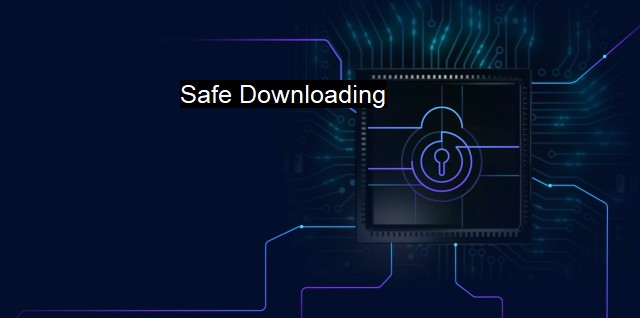What is Safe Downloading?
Securing your System: Essential Tips for Safe Downloading in the World of Cyber Threats and Antivirus Protection
Safe downloading refers to the acquisition of information from the internet done in a manner that poses negligible risk to confidentiality, integrity, and availability of your digital data. As broader technological capabilities continue to evolve rapidly, we step into an era where vast quantities of data are exchanged through sharing, uploading, or downloading. safe downloading involves accessing digital information while ensuring no malicious content is transferred that could harm or compromise the safety of your devices.In general, safe downloading denotes monitoring, scrutinizing, and verifying all data that gets transferred to your device via downloads. It’s easy to trigger a download online, but intimidating to consider the virtual minefield of threats one may encounter. Security threats such as viruses, malware, spyware, adware, ransomware, phishing attacks, and other harmful content are frequently embedded in files available for download on the internet.
Practicing safe downloading habits is vital because neglecting them can lead to detrimental consequences. The dangers one might encounter include losing valuable data, impairing device performance, suffering privacy breaches, encountering financial fraud, illicit access to system data, and more widespread damage in extreme cases.
Antivirus applications play a significant role in identifying and removing potential threats to your digital security. Robust antivirus software provides real-time protection against incoming threats and routinely scans your device for suspicious activities. not every software provides complete protection. Hence the best form of defense goes beyond antivirus software; it is about mere vigilance, carefulness, judgement and treating downloads with suspicion.
For safe downloading, a series of actions you should implement include downloading only from reputable websites, checking the credibility of files before downloading them, keeping all software updated, constantly using and maintaining reliable antivirus software, and refraining from opening emails with strange attachments or links.
Firstly, as a rule of thumb, you should only download from trusted sources to avoid being preyed on by phishing attacks or harmful content. Be aware that third-party websites offering free downloads might contain malicious files that will harm your device or compromise your security.
Before downloading, always check the credibility of files. You can do this by verifying file sizes, which should correspond to labels and by searching for the file name online to check fraud alerts associated with it. Also, force your browser to verify downloads; don't automatically start downloads from untrusted sources. Download managers can also be used in this regard as they can check the authenticity of the file's source and monitor downloads for suspicious activities.
Updating software holds great significance; updates often include patches that fix vulnerabilities in previous versions that could be exploited by hackers. Thus, it's essential to keep all programs on your computer up to date, from the operating system to the browser.
Understand the value your antivirus software brings. Besides identifying threats, it helps clean up your system, quarantines harmful downloads, and blocks access to damaging websites. But remember, antivirus solutions shouldn't be your only safety shield. Sometimes, harmful content slips through even the most sophisticated security systems, so don't become complacent.
Do not open suspicious email attachments or click on unverified links, even if they appear to be from someone you know. This behavior is a common way scammers distribute malware and other harmful programs. Learn to identify typical scam characteristics - poor spelling or grammar, an unfamiliar link address, or a strange file format.
Therefore, when understood thoroughly, safe downloading serves as a responsible approach to sustain a more secure and healthier environment. Cultivating safe downloading practices helps minimize exposure to cyber threats, making it less likely for your devices or personal information from being compromised. With the proper habits and tools, you can enjoy technology's convenience without compromise to your personal or professional realms.

Safe Downloading FAQs
What is safe downloading?
Safe downloading is the act of downloading files from a trusted source and ensuring that they do not contain any viruses or malware that could harm your computer.How can I ensure safe downloading?
To ensure safe downloading, you should only download files from trusted sources, scan all downloaded files with an antivirus program, and keep your antivirus software up-to-date.What are the risks of unsafe downloading?
Unsafe downloading can lead to malware infections, which can compromise your computer's security, steal your personal information, and even damage your system.What should I do if I suspect a downloaded file is unsafe?
If you suspect that a downloaded file is unsafe, do not open or run it. Instead, delete the file immediately and run a full scan with your antivirus software to ensure that your system is secure.| | A | | | B | | | C | | | D | | | E | | | F | | | G | | | H | | | I | | | J | | | K | | | L | | | M | |
| | N | | | O | | | P | | | Q | | | R | | | S | | | T | | | U | | | V | | | W | | | X | | | Y | | | Z | |
| | 1 | | | 2 | | | 3 | | | 4 | | | 7 | | | 8 | | |||||||